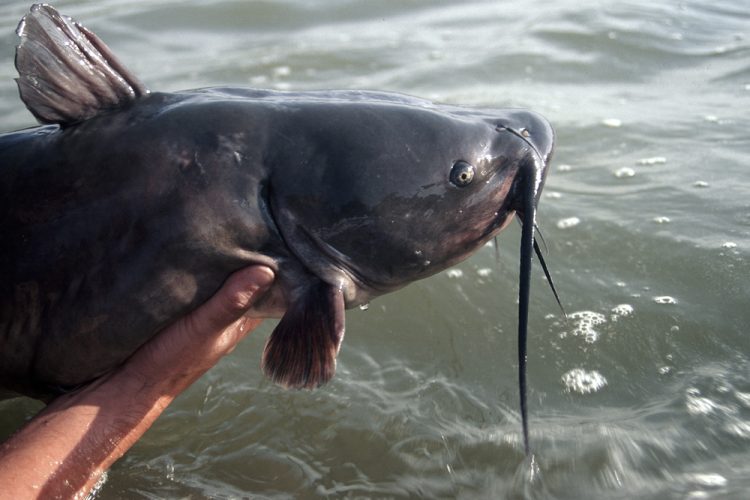Moments before freedom: a trophy channel cat is cradled above the current, gills pumping,
as the angler practices the kind of careful release that ensures this old warrior will be ready
for another fight in seasons to come.
Why Smart Anglers Let Big Cats Swim Away
By Keith “Catfish” Sutton
Catch-and-release catfishing. Not long ago, that phrase sounded like a joke—about as believable as “jumbo shrimp” or “quiet boat ramp.” But for anglers who dream of wrestling true giants, releasing fish has quickly become the smartest move you can make.
Why? Because every trophy you keep is one you, or anyone else, will never catch again. Big cats are old, slow-growing and rare. Remove them, and it can take decades—yes, decades—to replace them.
Take flatheads. A 30-pounder is likely a 10-year-old fish. A 50-pounder? You’re looking at 20 to 30 years of growth. Channel and blue cats follow a similar pattern: trophy size equals senior citizen status in the fish world. These aren’t renewable resources you can just “restock” like a farm pond.
That’s why more catfish anglers are voluntarily letting the big ones swim free. And it’s why my personal rule is simple: keep eaters under 10 pounds, release anything heavier. Small cats are plentiful and make better table fare. Big ones are the breeders, the ones that keep the fishery healthy.
Snap a few photos, then turn them loose. But if you’re going to release them, do it right. Catfish are hardy, but poor handling can still kill them. Here’s how to give your release the best odds of survival:
Hook Choice
- Use circle hooks. They hook fish in the corner of the mouth, reducing deep hooking. Barbless versions, or crimping the barb, make unhooking faster and safer.
- If a fish swallows the hook, don’t rip it out. Cut the line close and leave it.
Handling
- Land them quickly. Playing a fish to exhaustion increases stress and mortality.
- Keep them in the water. Lift briefly for photos, then return them.
- Wet your hands before touching. This protects their slime coat, which is their immune system.
- Use a soft, small-mesh net to protect skin and fins.
Release Technique
- No squeezing, no gill grabs. Cradle the fish gently in the water.
- Revive before release. Move the fish back and forth to push water through the gills until it swims away on its own.
I’ve seen firsthand how smart handling and smart harvest rules create world-class fisheries. On Manitoba’s Red River—where barbless hooks are law and channel cats over 24 inches must be released—I landed about 50 cats in three days. The smallest weighed 17 pounds. The largest tipped the scales at 35.
That wasn’t magic water. It was good management and disciplined anglers. If a short-season Canadian river can produce those numbers, imagine what U.S. waters could do with similar rules and more voluntary release of trophies.
The math is simple: release more trophies, catch more trophies. If you love chasing big cats, the next one you let go might be the same fish you meet again 10 years later, 20 pounds heavier and twice as wise.



